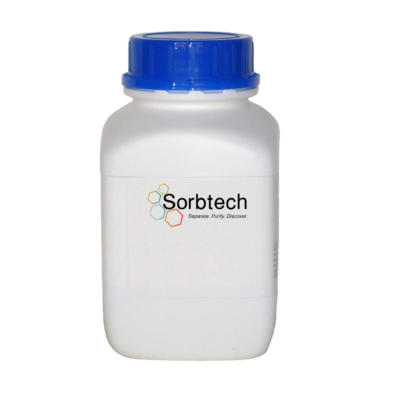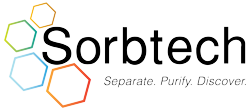Polyamide 6 – High adsorption for Prep Chromatography
Polyamide 6 is widely used to separate botanical extracts and other natural products that contain phenolic and polyphenolic groups.
Because of its swelling properties, Polyamide 6 provides a very high adsorption capacity. In fact, it performs much better than silica gel, alumina, PSDVB, and most other sorbents available today.
Moreover, it is ideally suited for preparative chromatography, where large-scale separations are needed. At the same time, it is also valuable for analyzing phenolic and polyphenolic compounds in natural product research. As a result, Polyamide 6 offers both versatility and strong performance across many chromatography applications.
Polyamide 6 Chromatography Applications:
It is commonly used to isolate and identify natural compounds that contain phenolic and polyphenolic functional groups, such as:
- Flavonoids
- Anthocyanins
- Anthoxanthines
- Anthraquinones
- Flavones and flavonols
- Isoflavones
In summary, this makes it especially valuable for natural product research and analysis.

By adjusting the balance between adsorption and partition effects, you can change the retention behavior of polyamide in many ways. Because polyamide has medium polarity, the stationary phase (polyamide swollen with eluent) works well with mobile phases that are either more polar or less polar. As a result, this flexibility makes it possible to run two-dimensional chromatography using the same stationary phase, combining both normal-phase and reversed-phase techniques.
Adsorption Depends On:
- The number of the polar groups,
- The degree of the H-bonding activities,
- Size of the analytes, and
- The shape of the analytes.
Thus, structural isomers can be well separated on polyamide.
Typical Polyamide 6 Applications:
- Phenols, aromatic nitro, and amino compounds
- Chalcones, chinones, flavones, and anthraquinones
- Anthocyanins and anthoxanthines
- DNP-amino acids
- Carbonic acids and their Amides
- Sulfonic acids and their amides
| Catalog No. | Description | Price (USD) |
|---|---|---|
| 26520-025 | Polyamide for CC, <70um, 250g |  Buy now $234.62 Buy now $234.62 |
| 26530-025 | Polyamide for CC, 50-160um, 250g |  Buy now $234.62 Buy now $234.62 |
| 26540-1 | Polyamide for CC, 100-300um, 1kg |  Buy now $847.50 Buy now $847.50 |
For more information see our Polyamide for TLC page.
Polyamide 6: Properties, Processing, and Applications
Abstract
Polyamide 6 (PA6) is a versatile synthetic polymer known for its strength, heat resistance, and chemical durability. This article gives a clear overview of PA6, including its structure, how it is processed, and the many ways it is used in industries like automotive, textiles, electronics, and healthcare.
1. Introduction
Polyamide 6 (PA6), part of the nylon family, is now one of the most widely used polymers. Because it combines strength, stability, and easy processing, it serves many industries. This article explains its structure, shows the main processing methods, and highlights the wide range of applications where PA6 adds value.
2. Molecular Structure and Properties
PA6 is a straight-chain polymer made from repeating caprolactam units. Its amide bonds give it strong mechanical strength, stiffness, and high resistance to wear. In addition, PA6 resists many chemicals, so it performs well in tough environments.
3. Processing Techniques
Manufacturers can process PA6 using injection molding, extrusion, blow molding, and other methods. However, its high melt viscosity means conditions must be carefully controlled. As a result, producers can achieve both strong mechanical properties and smooth surface finishes.
4. Applications of Polyamide 6
4.1. Engineering Plastics
PA6 is widely used in engineering plastics. Because of its impact strength and dimensional stability, it is common in automotive, aerospace, and electronics components.
4.2. Textiles and Apparel
Its light weight, moisture control, and durability make PA6 perfect for sportswear, hosiery, and industrial fabrics.
4.3. Electrical and Electronics
PA6 provides insulation, resists heat, and handles chemicals. Therefore, it is used in connectors, switches, and insulating housings.
4.4. Automotive Components
The auto industry uses PA6 for engine parts, fuel system pieces, and interior trim. As a result, vehicles benefit from both durability and heat resistance.
4.5. Consumer Goods
Everyday items like toys, packaging, and kitchen tools rely on PA6 because it is strong, safe, and attractive.
4.6. Medical Devices
In healthcare, PA6 is used for surgical instruments, catheters, and sterile devices. Moreover, it works well because it is biocompatible and easy to sterilize.
5. Environmental Considerations
As sustainability grows in importance, developers are creating bio-based and recyclable PA6 to reduce its environmental impact.
6. Future Trends
Research focuses on increasing strength and heat resistance. In addition, new processing methods aim to expand the number of industries that can use PA6.
7. Conclusion
Polyamide 6 continues to be a key material. Because it offers strength, chemical resistance, and easy processing, it is used in plastics, textiles, electronics, and more. Most importantly, as technology improves, PA6 will remain a reliable choice in materials science and industrial design.


